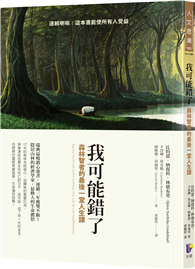Originally published in 1988, for this volume the editors chose to deal directly with current developments in environmental participation. Bringing together contributions that range from studies of hands-on user participation to explorations on a much broader scale of the role we all play in shaping our environment.
| FindBook |
有 1 項符合
New Directions in Environmental Participation的圖書 |
 |
New Directions in Environmental Participation 出版社:Routledge 出版日期:2024-11-07 語言:英文 規格:精裝 / 202頁 / 普通級/ 初版 |
| 圖書館借閱 |
| 國家圖書館 | 全國圖書書目資訊網 | 國立公共資訊圖書館 | 電子書服務平台 | MetaCat 跨館整合查詢 |
| 臺北市立圖書館 | 新北市立圖書館 | 基隆市公共圖書館 | 桃園市立圖書館 | 新竹縣公共圖書館 |
| 苗栗縣立圖書館 | 臺中市立圖書館 | 彰化縣公共圖書館 | 南投縣文化局 | 雲林縣公共圖書館 |
| 嘉義縣圖書館 | 臺南市立圖書館 | 高雄市立圖書館 | 屏東縣公共圖書館 | 宜蘭縣公共圖書館 |
| 花蓮縣文化局 | 臺東縣文化處 |
|
|
內容簡介
作者簡介
David Canter is Emeritus Professor at The University of Liverpool, UK. Having set up the first MSc in Environmental Psychology at The University of Surrey in 1972, he went on to establish the Journal of Environmental Psychology in 1980, editing it for 20 years. Soon after he founded the International Association of People-Environment Studies (IAPS). David has published widely on many aspects of human interactions with their surroundings; his 1977 book The Psychology of Place, being one of the most cited publications in the area.
Martin Krampen (1928-2015) was a leading German semiotician. He worked in the field of visual semiotics and environmental perception, as well as being a professional artist. Over the course of his career Krampen held position at universities across North America and Europe teaching courses in social psychology, semiotics, and the psychology of design. He was the University of Waterloo’s first full-time research associate, where he worked alongside Professor George Soulis to study the influence of design on industry. Krampen taught Visual Communication at Hochschule der Künste from 1977 until his retirement in 1993.
David Stea is Professor Emeritus of Geography and International Studies at Texas State University and Research Associate with the Center for Global Justice in Mexico. As Carnegie Interdisciplinary Fellow at Brown University from 1964 to 1966, he developed the new field of Environmental Psychology and the related study of spatial and geographic cognition. David is a member of the editorial boards of a number of journals, the co-author or co-editor of several books and author of some 150 articles and book chapters on various subjects, including sustainable development and environmental issues in Latin America. In 1987 he was nominated for the Right Livelihood Prize (also known as the "alternative Nobel") for his international work with indigenous peoples.
|











